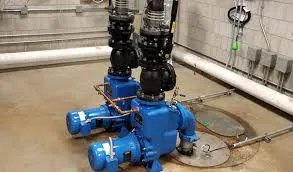irish
- Afrikaans
- Albanian
- Amharic
- Arabic
- Armenian
- Azerbaijani
- Basque
- Belarusian
- Bengali
- Bosnian
- Bulgarian
- Catalan
- Cebuano
- Corsican
- Croatian
- Czech
- Danish
- Dutch
- English
- Esperanto
- Estonian
- Finnish
- French
- Frisian
- Galician
- Georgian
- German
- Greek
- Gujarati
- Haitian Creole
- hausa
- hawaiian
- Hebrew
- Hindi
- Miao
- Hungarian
- Icelandic
- igbo
- Indonesian
- irish
- Italian
- Japanese
- Javanese
- Kannada
- kazakh
- Khmer
- Rwandese
- Korean
- Kurdish
- Kyrgyz
- Lao
- Latin
- Latvian
- Lithuanian
- Luxembourgish
- Macedonian
- Malgashi
- Malay
- Malayalam
- Maltese
- Maori
- Marathi
- Mongolian
- Myanmar
- Nepali
- Norwegian
- Norwegian
- Occitan
- Pashto
- Persian
- Polish
- Portuguese
- Punjabi
- Romanian
- Russian
- Samoan
- Scottish Gaelic
- Serbian
- Sesotho
- Shona
- Sindhi
- Sinhala
- Slovak
- Slovenian
- Somali
- Spanish
- Sundanese
- Swahili
- Swedish
- Tagalog
- Tajik
- Tamil
- Tatar
- Telugu
- Thai
- Turkish
- Turkmen
- Ukrainian
- Urdu
- Uighur
- Uzbek
- Vietnamese
- Welsh
- Bantu
- Yiddish
- Yoruba
- Zulu
Telephone: +86 13120555503
Email: frank@cypump.com
Aug . 13, 2024 02:06 Back to list
Powerful Submersible Sewage Grinder Pump for Efficient Wastewater Management Solutions and Enhanced Performance
Understanding Submersible Sewage Grinder Pumps
In modern wastewater management, the efficiency of pumping systems is crucial for ensuring sanitation and environmental safety. Among the various pumping solutions available, the submersible sewage grinder pump has emerged as a vital component in both residential and industrial settings. This article aims to explore the functionality, importance, and benefits of these specialized pumps.
What is a Submersible Sewage Grinder Pump?
A submersible sewage grinder pump is a type of pump designed to handle sewage and wastewater, particularly in residential and commercial environments where normal sewage pumps may struggle. Unlike standard pumps, grinder pumps have a built-in grinding mechanism that reduces solid waste to smaller particles, enabling smoother transport through pipes. This innovation is crucial in preventing clogs and maintaining efficient sewage flow.
How Does It Work?
The operation of a submersible sewage grinder pump is relatively straightforward. The pump is installed below the water level in a tank or wet well. As wastewater enters the pump, the grinder mechanism—typically consisting of rotating blades—grinds the solid waste into fine particles. Once the waste is sufficiently reduced, the pump uses a powerful motor to push the wastewater through the discharge pipe toward the treatment facility or septic system.
This process allows the pump to handle a variety of wastes, including human waste, paper products, and other solids that are commonly found in sewage. The ability to grind solids is essential because it minimizes the risk of blockages in the drainage system, which can lead to costly repairs and environmental hazards.
Importance of Submersible Sewage Grinder Pumps
The significance of submersible sewage grinder pumps cannot be overstated. Their primary role is to enhance the efficiency of waste management systems. By reducing the size of solids in wastewater, these pumps ensure that sewage travels smoothly through the plumbing system without obstruction. This is particularly important in systems that have long runs of piping, where clogs can commonly occur.
submersible sewage grinder pump

In addition, grinder pumps are essential in situations where gravity-based systems are impractical. For homes located in low-lying areas or where the sewage must be pumped uphill to reach a treatment facility, grinder pumps provide the necessary force to transport wastewater efficiently.
Benefits of Submersible Sewage Grinder Pumps
1. Clog Prevention The grinding mechanism diminishes the size of solids, significantly reducing the likelihood of blockages in pipes.
2. Versatility These pumps can handle a wide variety of waste materials, making them suitable for various applications, from residential homes to industrial facilities.
3. Space-Saving Design Being submersible, these pumps do not require above-ground installation space, allowing for a more discreet setup.
4. Durability Constructed from robust materials, submersible sewage grinder pumps are designed to withstand harsh conditions and heavy use.
5. Energy Efficiency Many models are designed to operate with lower energy consumption while still providing the necessary pumping power, leading to reduced operational costs.
Conclusion
Submersible sewage grinder pumps play a critical role in wastewater management, offering efficiency, reliability, and convenience. Their innovative design ensures that solid waste is easily processed and transported, making them an indispensable tool for both homeowners and industries. As the demand for effective sewage management solutions continues to grow, the importance of these pumps is set to increase, aligning with broader environmental and public health goals. Selecting the right submersible sewage grinder pump can ensure that waste is handled safely and efficiently, ultimately contributing to a cleaner and healthier environment.
-
Horizontal Split Case Pump with GPT-4 Turbo | High Efficiency
NewsAug.01,2025
-
ISG Series Pipeline Pump - Chi Yuan Pumps | High Efficiency, Durable Design
NewsAug.01,2025
-
Advanced Flue Gas Desulfurization Pump with GPT-4 Turbo | Durable & Efficient
NewsJul.31,2025
-
ISG Series Vertical Pipeline Pump - Chi Yuan Pumps | Advanced Hydraulic Design&Durable Construction
NewsJul.31,2025
-
ISG Series Vertical Pipeline Pump - Chi Yuan Pumps | Energy Efficient & Low Noise
NewsJul.31,2025
-
pipeline pump - Chi Yuan Pumps Co., LTD.|High Efficiency&Low Noise
NewsJul.31,2025










